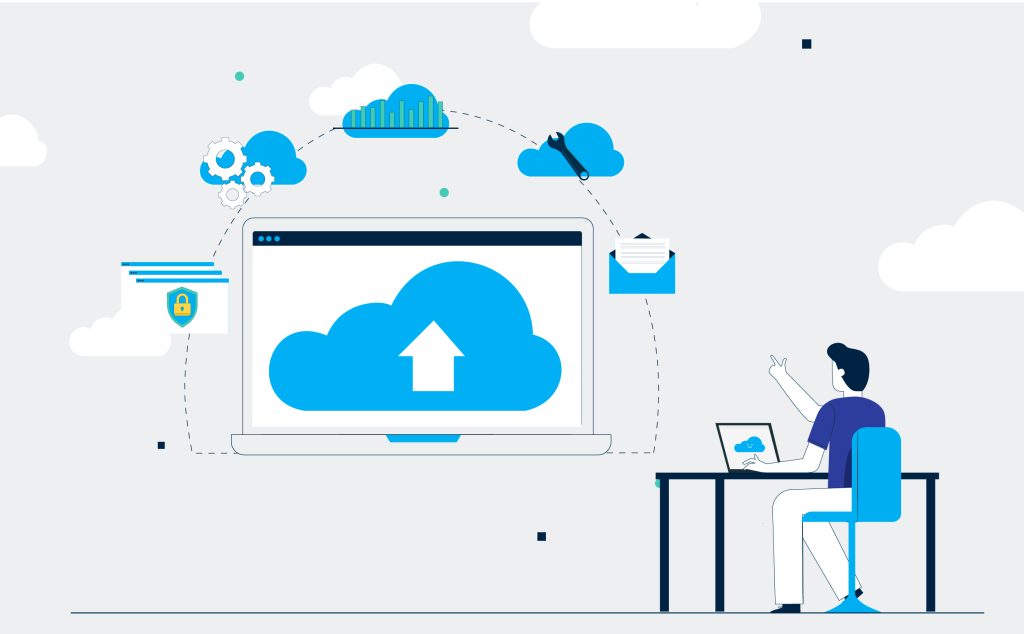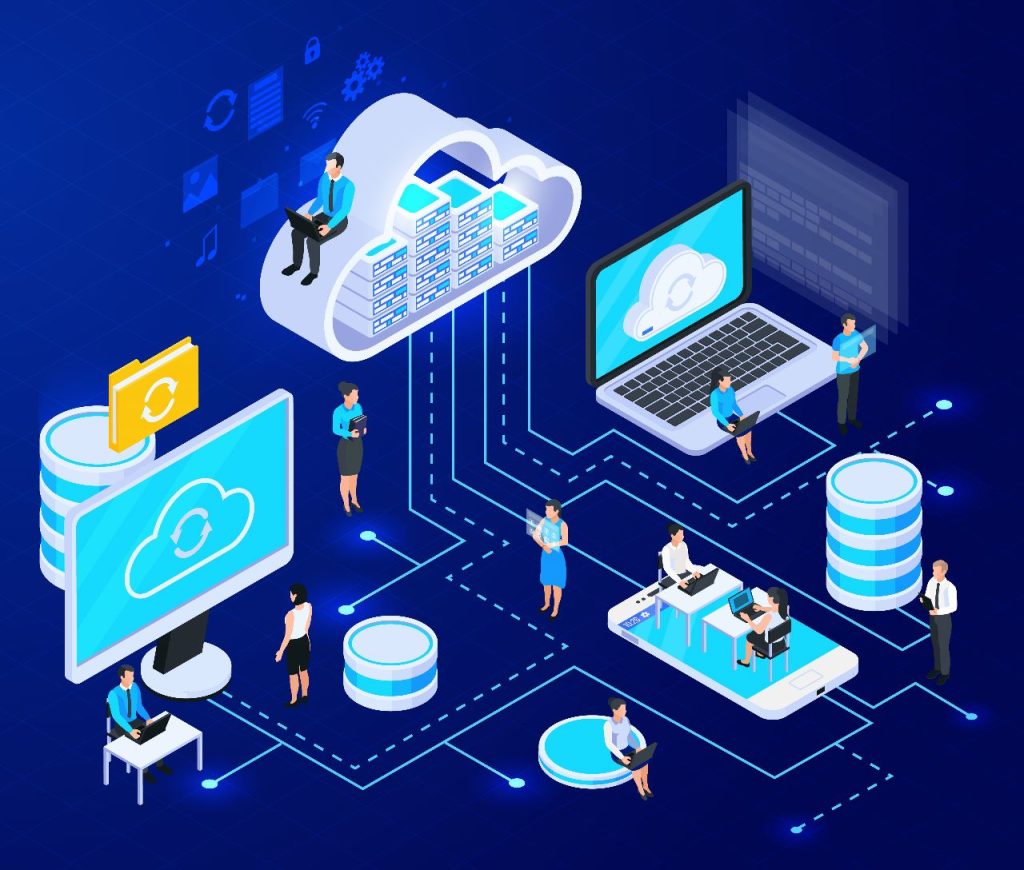Introduction
Cloud didn’t just move servers to someone else’s data center.
It rewired how we build, ship, and defend software.
In the cloud, you can deploy a new environment in minutes.
Attackers can, too—by abusing a token, a misconfigured bucket, or a CI secret.
Security is no longer a castle-and-moat problem.
It’s an identity, configuration, and automation problem—at scale, across regions, providers, and SaaS.
This guide shows how cloud and security shape each other.
Cloud changes the security game
From perimeter to identity-first
- Most traffic is service-to-service, not user-to-server.
- Trust shifts from IP ranges to who/what you are and how you authenticate.
From static boxes to APIs & templates
- Infrastructure is code. Great for repeatability.
- Also great for repeating mistakes unless you add guardrails.
From slow change to constant change
- Hundreds of resources spin up and down daily.
- Your controls must be automated and continuous, not quarterly.
Shared responsibility (where the line really sits)
Provider vs. you
- Cloud provider: physical security, hypervisor, managed service uptime.
- You: identity, data classification, configuration, keys, app logic, tenant isolation within your account.
Practical examples
- Encrypted storage offered ≠ your data is safe. You must manage KMS keys and access.
- Managed Kubernetes ≠ secure workloads. You own RBAC, image policy, secrets, networking.
The cloud attack surface (and what tends to break)
1) Misconfiguration & drift
- Public buckets, open security groups, weak IAM conditions, default passwords.
- Usually created by speed, not malice.
2) Identity abuse
- Stolen access keys, over-privileged roles, OAuth app abuse, long-lived CI tokens.
- Lateral movement happens through assume-role and service account hops.
3) Supply chain & CI/CD
- Poisoned base images, dependency typosquatting, compromised build runners.
- A signed artifact is only as strong as your pipeline.
4) Data egress & exfil
- Unrestricted egress to the internet, SaaS-to-SaaS connectors without DLP.
- Snapshots and logs leak just as easily as primary data.
5) Container & serverless gaps
- Insecure defaults, noisy privileges, no runtime controls, secrets in env vars.
- Function sprawl without policy-as-code.
Security pillars that fit how cloud works
Identity & access (the control of controls)
- SSO + MFA everywhere; eliminate local users and static keys.
- Least privilege with predefined roles, conditions (time, resource path, network), and JIT elevation.
- Workload identity: attach identities to compute (VM/Container/Function) or use federation for CI—no long-lived secrets.
Network: private by default, internet by exception
- Private endpoints, service endpoints, and egress policies.
- Micro-segmentation via security groups/network policies; layer service mesh for mTLS between workloads.
- Global front doors (managed L7) with WAF, rate limits, and bot controls.
Data security: classify, encrypt, minimize
- Tag data by sensitivity; enforce where it may live (region/zone).
- Envelope encryption with customer keys; rotation and access reviews.
- Tokenization for high-risk fields; DLP for guardrails at ingest and egress.
Secrets & keys (no more copy-paste)
- Central secrets manager with app-based retrieval and short TTL caches.
- Separate KMS from app accounts; audit Decrypt usage.
- For machine identities, prefer OIDC/SAML federation over keys.
Posture & policy-as-code (make the right path the easy path)
- CSPM/SSPM to detect misconfig at scale.
- IaC scanning (pre-merge) + admission controls (at deploy).
- Guardrails: org policies / policies-as-code that block bad regions, public storage, broad IAM.
Workload protection (containers, VMs, serverless)
- Image signing/verification, SBOM, and CVE gates.
- Runtime: policy to block privilege escalation, exec into pods, filesystem writes in prod paths.
- Serverless: restrict outbound, keep packages slim, rotate secrets often.
Detection & response (designed for APIs)
- Centralize logs: control plane, data access, auth, and network.
- Stream to a cloud SIEM/XDR; write detections for cloud-native behaviors (e.g., new role grant → unusual API usage → egress spike).
- Build automations for quarantine, key revoke, snapshot + isolate, and ticketing.
Resilience & anti-ransomware
- Immutable, versioned backups to separate accounts/projects/tenants.
- Cross-region replication; routine restore drills.
- Block mass-deletion API patterns; require break-glass for destructive actions.
Multi-cloud & SaaS without losing your mind
Normalize the foundations
- Identity: one IdP; SCIM for provisioning; app roles via groups.
- Logging: common schema (e.g., OCSF) and a single analysis plane.
- Policy: shared rules expressed as code; per-provider adapters.
Decide once, apply everywhere
- Regions allowed, public storage rules, external sharing defaults, DLP rules.
- Golden templates for VPCs, clusters, and pipelines—per cloud, same intent.
Governance that speeds teams up
Platform + Security = paved roads
- Landing zones: accounts/projects with SSO, audit sinks, KMS, network baselines.
- Golden templates: app + infra starters with logging, metrics, IAM, and cost tags pre-wired.
- Exception process: time-boxed, ticketed, and visible—then back to the paved road.
People & ownership
- Security champions in each squad; weekly office hours.
- Product teams own day-to-day posture; security owns policy, detection, response.
Metrics that actually move risk
Identity & access
- MFA coverage, number of static keys, time-to-revoke high-risk roles, % of human access via groups.
Configuration & posture
- Mean time to remediate critical misconfig, % resources compliant at creation, drift rate per week.
Workloads & supply chain
- % images with SBOM + signature, build pipeline SLO (median time to patch CVE), blocked deploys by policy.
Detection & response
- Time-to-detect (TTD) and time-to-contain (TTC) for cloud incidents, signal-to-noise ratio in alerts.
Resilience
- Successful restore drills, RPO/RTO achieved, backup immutability coverage.
Common failure modes (and the fast fix)
Public data exposure
- Why: bucket default public, link sharing, mis-set ACLs.
- Fix: org policy blocks public, CSPM rule + auto-remediate, signed URLs only.
Compromised CI token
- Why: long-lived secrets in repo or runner.
- Fix: OIDC federation + impersonation; rotate, revoke, and require attested runners.
Cryptomining on new workloads
- Why: leaked keys, weak IAM, open compute quotas.
- Fix: anomaly detections on new region usage + unusual instance types; auto-quarantine account/project.
Runaway egress bills
- Why: exfil or misrouted logs/backups.
- Fix: egress policies, VPC endpoints/private links, DLP on outbound, budgets + real-time alerts.
A 90-day cloud security plan (sequenced, realistic)
Days 0–15 — Stop the bleeding
- Enforce SSO + MFA; kill long-lived keys; disable root/admin logins.
- Turn on control-plane + data-access logs; route to a central project/account.
- Add org-level guardrails: block public storage, restrict regions, disallow legacy auth.
Days 16–35 — Lay the runway
- Stand up landing zones with baseline networking, KMS, audit sinks.
- Create golden templates (VM, container, serverless) with logging and least-privilege baked in.
- Deploy CSPM; fix top 20 misconfigs automatically.
Days 36–60 — Shift left
- Add IaC scanning and image signing to CI; fail builds on critical issues.
- Introduce secrets manager in apps; remove secrets from envs and repos.
- Start policy-as-code admission controls (deny wide-open security groups, public buckets).
Days 61–75 — Detect & respond
- Wire high-fidelity detections (new admin + key usage + egress spike).
- Build SOAR runbooks: quarantine project, revoke tokens, snapshot/lock.
- Run one tabletop and one live drill.
Days 76–90 — Resilience & review
- Configure immutable backups in separate tenants; run a restore test.
- Measure KPIs; publish a one-pager; set quarterly targets (e.g., –80% static keys).
Quick technical patterns
Identity patterns
- Humans via groups only; admins time-boxed with approval.
- Workloads use attached identity or federation; no shared service accounts.
Network patterns
- Private endpoints for managed services; egress only through filtering gateways.
- L7 front doors with WAF; mTLS between services (mesh or sidecar-less).
Data patterns
- Tag datasets; keys per data domain; envelope encryption by default.
- DLP at ingest; tokenization for PII/PCI; separate tenants for backups.
CI/CD patterns
- Signed artifacts (Sigstore/Cosign); SBOM attach; policy checks at deploy.
- Isolated runners; no internet-wide package mirrors; pin registries.
Closing thought
Cloud multiplies what you’re already good—or bad—at.
Invest in identity, configuration, and automation first, then let the cloud’s speed work for you instead of the attacker.





